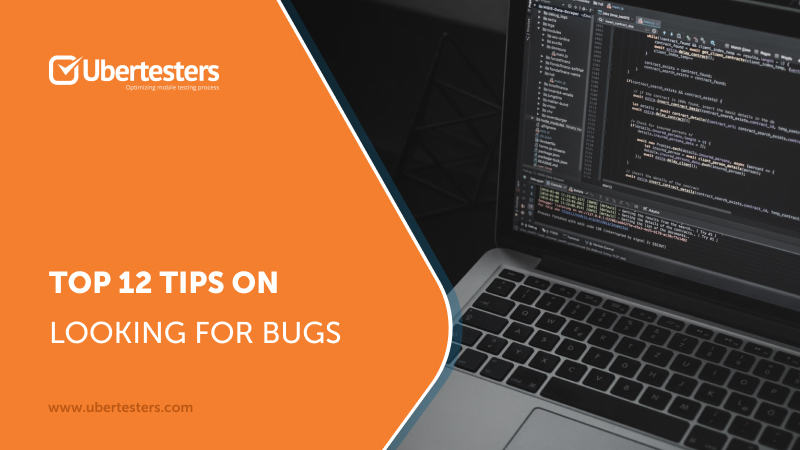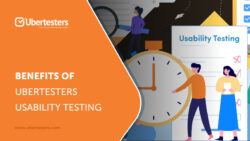Top 12 Tips on Looking For Bugs

The QA process is an inevitable part of any product development. Making sure your solution is having a top-notch usable design, working properly, and can be easily operating in stress environments is the key to success in creating an excellent product or service. Still, many companies undervalue the role of QA and use testing only on the final stages of the development process. However, looking for bugs should be done on each stage of the production process to ensure the best results at its end. But how to look for bugs in the most effective way? Here is a list of tips for those who want to create a flawless and successful application with the maximum number of satisfied customers.
Make tests on each iteration of the development process
This means you should use at least the standard test cases each time you are planning to move to the next iteration. It should be integrated into each stage of product development and performed on a regular basis. Testing the final solution only is one of the common mistakes of many companies.
Create detailed and understandable bug reports
Effective communication between the developers and the QA team is vital for the product’s quality. Furthermore, it will make the process of fixing bugs faster and more effective. Understanding the vulnerabilities of the system will be also helpful for detecting bugs in the future.
Make testing a team effort
Everyone involved in the project should have a solid understanding of the final product or service. Following this rule will help the entire team to detect and report about the bugs quickly. Just make sure the entire team is familiar with the ‘bug reporting tool’ so that reported issues won’t be lost or unreported.
Use modern bug testing software
The market for issue tracking software has lots of solutions for any type of app. Using different types of testing programs will help you to detect a larger number of bugs with minimum efforts within the shortest terms. Keep in touch with the new services and try different tools to find the services that will perfectly suit your current product.
Test user documentation
Almost any modern solution has user manuals, guides, and FAQs. All these documents should also be tested and updated regularly. The descriptions of the functionality of your app should be 100% clear and comprehensive. It is better to revise all your documents from different angles to ensure they are top quality, clear, and easy to use. By the way, in case your solution is developed for beginners, the technical descriptions should be as easy as possible.
Don’t limit yourself with only automated testing
Automation of QA is good for functionality testing but might fail to detect dozens of hidden bugs that appear aside from your particular test case and pre-written scripts. Manual testing should always be combined with automation. The fact is that a human can notice a bug or mistake any algorithm will miss. Moreover, automated testing can’t be helpful with checking the design and issues in the app’s interface.
Always make the most detailed installation testing
Signing up and creating a profile is considered to be one of the most important steps for providing the best user experience. In case the customers fail to sign up successfully, they are likely to delete the solution right at once. Consequently, QA experts should pay extra attention to both signup, and login processes.
Use stress testing
How will your app behave in case the device it is running on is suddenly dried out? What about making dozens of registrations at the same time? What will be your program’s performance when you go out of the standard test environment? These are the main questions any QA team should ask for making the most advanced stress testing.
Do security testing
Making sure your app will not crash, as well as the user’s data couldn’t be accessed by any third party is vital for any program. Try to think like a potential attacker - start with the most common scenarios to protect your system from any interference.
Always run regression tests after each of the new functions and options go live
This will help you double-check that the main program’s functionality was not badly influenced by the new features. Moreover, it is also important to perform repeated tests. There are lots of types of bugs that might not appear in the first circle of your test case. Therefore, it is necessary to test the same function or unit several times to avoid facing unexpected errors.
Think outside the box and try to do some monkey testing
After you’ve made all your automated tests and checked your app’s performance manually, you might feel you’ve done everything possible for the fine-tooth testing. However, performing monkey testing might give you really unexpected results: some bugs might occur when doing uncommon things with your app.
Use crowd testing
There is nothing better than testing performed by real people in real environments, using real devices. Testing in different geographies, carriers, types of devices, and OSs, is much more effective than using even the most modern and feature-rich virtualization tools. Not only you will get data, provided from real-life tests but you can also get unbiased feedback from human testers independently from your QA team. Ubertesters continue to be one of the leading solutions for effective and the most precise testing. We offer dozens of winning QA tools and utilities along with all types of testing services. We are always ready to provide you with all the needed information about our platform or crowd testing services and will help you to choose the testing your particular solutions requires. Want to learn more about the service? Don’t hesitate to contact us at sales@ubertesters.com.

